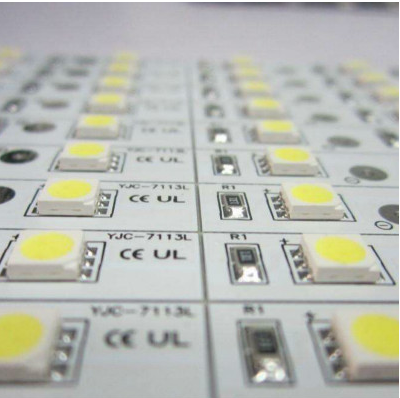1 The selection of components should be based on the actual needs of the PCB, and conventional components should be selected as far as possible. Do not blindly select small components or over-complex IC devices. 2) The layout principle of components is usually the layout of components
1 Selection of PCB components
According to the actual needs of the PCB, conventional components should be selected as much as possible, and small components or over-complex IC devices should not be selected blindly.

2 Layout principles of components
Usually the components are arranged on one side of the printed circuit board, this arrangement is convenient for processing, assembly and maintenance. For double-sided boards, the main components are also assembled on one side of the board, and there may be some small components on the other side, generally surface mount components. On the premise of ensuring the electrical performance requirements, the components should be parallel or perpendicular to the board surface, and parallel or perpendicular to the side of the main board, and the distribution on the board surface should be even and neat. Generally, the components should not be overlapped and placed, if overlap is really needed, structural parts should be used to fix them.
The components should be arranged as regularly as possible to obtain a uniform assembly density. There must be sufficient distance between thermal components and other components arranged around high-power components. The direction and density of the arrangement of components should be conducive to air convection. The components should be arranged in a straight line in the order of the circuit schematic diagram, and strive to be compact in order to shorten the length of the printed wire. If the circuit must be divided into several blocks due to board size restrictions or shielding requirements, each printed circuit board should be made an independent functional circuit for easy adjustment, testing and maintenance. At this time, each printed circuit board should be The lead wire of the control circuit board is the least.
In order to minimize the mutual influence and interference of the components on the printed circuit board, the components of the high-frequency circuit and the low-frequency circuit, and the high-potential and low-potential circuits should not be too close. The arrangement direction of the components and the adjacent printed wires should cross vertically. Especially inductive devices and components with magnetic cores should pay attention to the direction of the magnetic field. The axis of the coil should be perpendicular to the printed circuit board surface to minimize interference with other parts.
Considering the heat dissipation of the components and the thermal influence between them, the components that generate a large amount of heat should be placed in a position that is conducive to heat dissipation, such as near the heat dissipation hole. A radiator should be added when the operating temperature of the component is higher than 40°C. When the radiator is small, it can be directly fixed on the component, and when it is large, it should be fixed on the bottom plate. When designing the printed circuit board, consider the volume of the heat sink and the influence of temperature on the surrounding components.
Improve the seismic and impact resistance of printed circuit boards. Make the load distribution on the board reasonable to avoid excessive stress. Arrange large and heavy components as close to the fixed end as possible, or fix them with metal structural parts. If the printed circuit board is relatively long and narrow, you can consider using stiffeners to reinforce it.
The layout of components must meet the process requirements of reflow soldering and wave soldering. When double-sided reflow soldering is used, large components should be distributed on one side, and small components should be distributed on the other side. This can prevent the first side (small Components surface) The components are dropped into the reflow oven; when one side reflow soldering and the other side wave soldering are used, the large mounted components should be distributed on the reflow soldering surface, and the small components should be distributed on the wave soldering surface.
3PCB component direction design
Similar components should be arranged in the same direction as much as possible, and the characteristic directions should be consistent to facilitate the mounting, welding and testing of components. For example, the polarity of electrolytic capacitors, the anode of diodes, and the first pin of integrated circuits should be arranged in the same direction as possible .
During reflow soldering, in order to make the two PCB solder ends of the SMC and the pins on both sides of the SMD heat synchronously, to reduce the "tombstone", displacement, and soldering ends that are separated from the pad due to the inability to heat the solder ends on both sides of the components. The defect requires that the long axis of the SMC on the PCB should be perpendicular to the direction of the PCB conveyor belt of the reflow oven, and the long axis of Ed should be parallel to the direction of the conveyor belt of the reflow oven. During wave soldering, in order to make the two solder ends of SMC and both sides of SMD contact the solder wave at the same time, the long axis of SMD should be parallel to the direction of the conveyor belt of the wave PCB soldering machine, and the CBP and the component layout and arrangement direction The principle of smaller components in the front and avoiding mutual shielding should be followed.